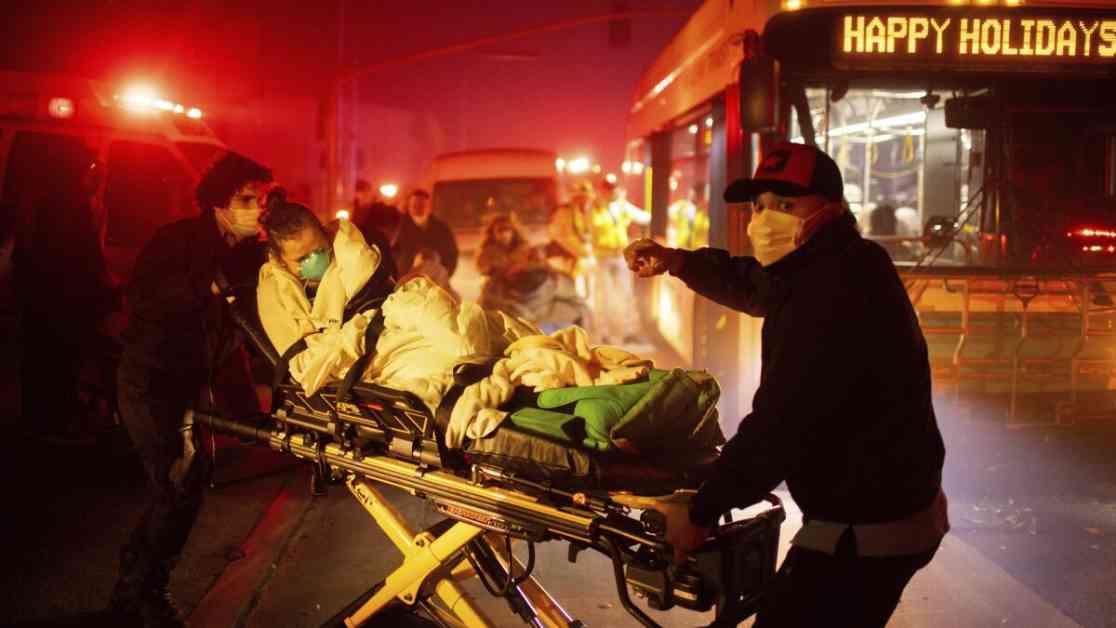The recent events of the deadly firestorm in Los Angeles County have prompted officials to take a closer look at the vulnerabilities faced by people with disabilities and mobility challenges during disasters. The tragic deaths of 17 individuals in Altadena have shed light on the county’s struggles in planning for the evacuation of elderly and disabled residents. These fatalities underscore the critical need for a comprehensive and effective strategy to ensure the safety of all community members in times of crisis.
The Call for Action
Following the devastating loss of lives in Altadena, the Board of Supervisors unanimously approved a motion to explore the creation of a registry for individuals with disabilities and mobility challenges. Supervisors Janice Hahn and Kathryn Barger spearheaded this initiative in response to the firestorm that claimed the lives of many vulnerable residents. The median age of those who perished was 77, with a significant portion of them facing mobility impairments that hindered their ability to evacuate promptly.
A deep dive into the events surrounding the fire revealed troubling delays in official evacuation alerts reaching the affected areas. The lack of timely communication and inadequate emergency planning exacerbated the challenges faced by elderly and disabled individuals in ensuring their safety. The failure to heed recommendations from the California Governor’s Office of Emergency Services further highlighted the gaps in preparedness that put vulnerable populations at risk. The need for a coordinated and proactive approach to emergency evacuations became glaringly apparent in the aftermath of the tragedy.
Perspectives and Solutions
Anthony Mitchell Jr., who lost his father and brother in the fire, emphasized the importance of a registry in preventing such tragedies from reoccurring. Mitchell’s poignant story of loss and the heartbreaking realization that a registry could have saved his loved ones underscores the urgency of implementing concrete measures to safeguard vulnerable residents. His call for a statewide registry reflects the broader impact of disasters that transcend county lines and necessitate a unified approach to emergency preparedness.
While the concept of a registry has garnered support from various stakeholders, some disability policy experts urge caution in relying solely on databases to address emergency evacuation challenges. June Isaacson Kailes, a disability policy consultant, highlights the limitations of registries in the face of large-scale disasters and emphasizes the need for comprehensive emergency plans that involve the community in problem-solving. The critical importance of realistic planning, resource allocation, and transparent communication emerges as key factors in enhancing emergency preparedness for individuals with mobility challenges.
T.J. Hill, executive director of the Disability Community Resource Center, advocates for a holistic approach that goes beyond registries to focus on early notification programs and community engagement. By shifting the focus from a registry to proactive communication strategies, Hill envisions a more inclusive and effective response to emergencies that prioritizes the needs of individuals with disabilities. The collaborative efforts of local officials, disability advocates, and community members are essential in developing sustainable solutions that address the unique challenges faced by vulnerable populations during disasters.
In response to the growing concerns raised by stakeholders, the L.A. County Department of Aging and Disabilities has been tasked with conducting a comprehensive study to evaluate the feasibility of creating a registry for individuals with disabilities and the elderly. This initiative aims to identify the legal, technological, and privacy implications of a registry while exploring alternative solutions such as emergency notification programs and enhanced data-sharing protocols. By engaging representatives from the disability community and assessing their specific needs, the county seeks to develop a tailored approach to emergency preparedness that prioritizes the safety and well-being of all residents.
Los Angeles County Fire Chief Anthony C. Marrone underscores the urgent need for proactive measures to protect vulnerable populations during emergencies. Marrone’s advocacy for collaboration and best practices in emergency response reflects a commitment to enhancing the county’s preparedness for future disasters. The lessons learned from past tragedies serve as a catalyst for change, driving officials, advocates, and community members to work together in creating a more resilient and inclusive emergency response system.
As the county embarks on this journey to strengthen its emergency preparedness efforts, the voices of those directly impacted by disasters must guide the development of sustainable solutions. By prioritizing community engagement, transparent communication, and proactive planning, Los Angeles County can pave the way for a more inclusive and effective approach to safeguarding vulnerable populations during emergencies. The road ahead may be challenging, but with collective action and a shared commitment to safety, the county can build a more resilient and responsive emergency response system that leaves no one behind.




